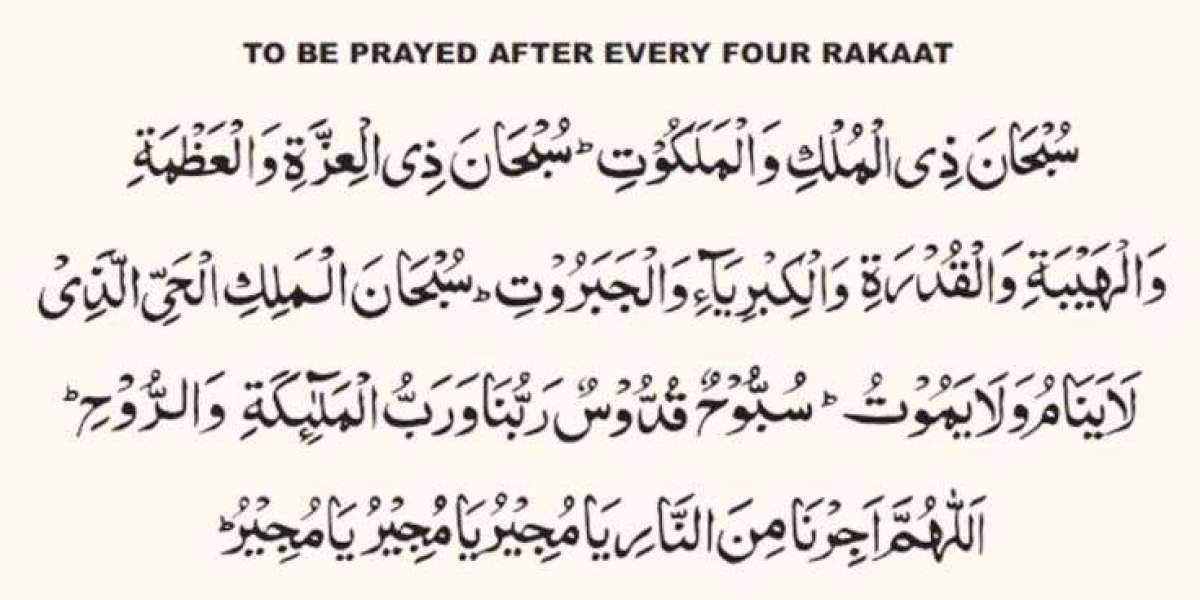What is sujood as sahw? how to offer it? That’s what we will learn about in this article, let’s get started.
Sometimes we become distracted during prayer and forget how many Rakat we offered; other times we add or omit a Rakah. Thus, we ought to make up for it by offering Sujud as Sahw also known as prayer of forgetfulness.
If you want to discover what is the prostration of forgetfulness, how to offer it, and when then keep reading.
What is the purpose of Sujood as Sahw in Islamic prayer?
Sujood as Sahw is offered to make up for forgetting the number of Rakat, adding to the prayer, or omitting from the prayer.
There is a fatwa that says: “The first Tashahhud in the prayer is one of the obligatory parts of prayer, according to the more correct of the two scholarly views, because the Prophet (peace and blessings of Allaah be upon him) used to do it and he said: “Pray as you have seen me praying.” If he omitted it by mistake, he should prostrate because of forgetting, and if he omitted it deliberately, then his prayer is invalid. The one who omitted it by mistake can make up for it by doing the prostration of forgetfulness before the salaam.”
So when adding to the prayer you should perform two prostrations after the Taslim and in the first Raka say Subhaana Rabbiyal-A’la (Glory be to my Lord most High) three times, then sit and say Rabb Ighfir li, Rabb Ighfir li (Lord forgive me, Lord forgive me). Then do the second Sujood and say Subhaana Rabbiyal-A’la (Glory be to my Lord most High) three times, that’s it.
If you omitted Rakat then do Sujood as Sahw before Taslim, after finishing the Tashahhud, and before the Taslim perform two prostrations. In the first Raka say Subhaana Rabbiyal-A’la (Glory be to my Lord most High) three times, then sit and say Rabb Ighfir li, Rabb Ighfir li (Lord forgive me, Lord forgive me). Then do the second Sujood and say Subhaana Rabbiyal-A’la (Glory be to my Lord most High) three times then do the Taslim.
What are some common situations that necessitate Sujood as Sahw?
Sujood as Sahw is offered to make up for forgetting the number of Rakat, adding or omitting from the prayer.
How to do sujood as sahw?
When making a mistake in prayer one should make up for it by offering a prostration of forgetfulness. But how to do Sujood as Sahw? There are three cases that you should be aware of and they are:
- Adding to the prayer.
- Omitting Rakat.
- Doubting the number of Rakat.
The prayer of forgetfulness is offered by doing two Sajdah, in each Sajdah, you will recite Subhaana Rabbiyal-A’la (Glory be to my Lord most High) three times, and between the two sujoods recite Rabb Ighfir li (Lord forgive me) three times.
Here is what you should do in each case.
1. Forgetting a part of Rakat or omitting a whole Rakat during Prayer.
Abdullah bin Buhaina Al-Asdi narrated: “The prophet (peace and blessing be upon him) stood up for the Zuhr prayer and he should have sat (after the second rak`a but he stood up for the third rak`a without sitting for Tashah-hud) and when he finished the prayer, he performed two prostrations and said Takbir on each prostration while sitting, before ending (the prayer) with Taslim; and the people too performed the two prostrations with him instead of the sitting he forgot.”
From this hadith, we understand that when we forget any part of the Raka, we should offer the Sujood as Sahw before the Taslim.
Also, Abu Hurairah narrated: “The Prophet (peace and blessing be upon him) offered the noon prayer and he gave the salutation at the end of two Rakahs. He was asked. Has the prayer been shortened? then he offered two Rakahs of the prayer and made two prostrations (at the end of it).”
2. Adding Rakat to the prayer.
If you accidentally added a Rakah then you should offer Sujood as Sahw after the Taslim.
Abdullah narrated:” Once Allah’s Messenger (peace and blessing be upon him) offered five Rakat in the Zuhr prayer, and somebody asked him whether there was some increase in the prayer. Allah’s Messenger (peace and blessing be upon him) said, “What is that?” He said, “You have offered five Rakat.” So Allah’s Messenger (peace and blessing be upon him) performed two prostrations of Sahu after Taslim.”
3. Doubting the number of Rakat.
When you forget the number of Rakat you offered then don’t worry you can still perform the prayer of forgetfulness.
Abu Saeed Al-Khudri narrated that, the prophet (peace and blessing be upon him) said: “If one of you does not know whether he prayed three or four (Rakat), let him pray a Rakah then prostrate twice after that when he is sitting. Then if he prayed five (rak’ahs), they (the two prostrations) will make his prayer even-numbered, and if he had prayed four, they will annoy and humiliate the shaitan.”’
When you don’t know or are not sure of the number of Rakat you prayed then take the less number, for example, if you don’t know if you prayed three or four Rakat then take the less number which is three, and continue praying to finish the four Rakat. Then when you finish praying do the Sahw prostration.
Mistake in sujood as sahw.
Some of the mistakes in Sujood as Sahw include forgetting to offer it and finishing the prayer, if that is the case then you can make it up as long as you didn’t do anything that invalidate the prayer like talking to someone or eating.
Is Sujood as Sahw before or after Salam?
There are three cases for Sujood as Sahw, when omitting a part of the prayer, adding a Rakah to the prayer, or not knowing the number of Rakat you offered.
If you added a Rakah then perform the prostrate of forgetfulness after Taslim.
If you omitted Rakat then do the prostrate of forgetfulness before Taslim.
What to say in sujood As-Sahw?
In each Sajdah, you will recite Subhaana Rabbiyal-A’la (Glory be to my Lord most High) three times, and between the two sujoods recite Rabb Ighfir li, Rabb Ighfir li (Lord forgive me, Lord forgive me).
Sujood as Sahw dua
What is Sujood as sahw dua? What to say when performing the prostration of forgetfulness? Here is what you should recite:
In each Sajdah, you will recite Subhaana Rabbiyal-A’la (Glory be to my Lord most High) three times, and between the two sujoods recite Rabb Ighfir li, Rabb Ighfir li, Rabb Ighfir li (Lord forgive me, Lord forgive me, Lord forgive me).
Is Sujood as Sahw obligatory or recommended?
What to do if you forget to do the prostration of forgetfulness? Does it invalidate your prayer? Sujood as Sahw is not obligatory, missing it or forgetting to do it will not invalidate your prayer. According to the Maliki school Prayer of forgetfulness is a sunnah act, but it is better to perform it when doing what invalidates the prayer like omitting any part of the prayer.
Al-Mawsoo‘ah Al-Fiqhiyyah Al-Kuwaytiyyah (Kuwaiti Encyclopedia of Fiqh) reads: “The preferred opinion according to the Hanafis and Hanbalis is that Sujood as-Sahw is obligatory; the Hanbalis maintained that Sujood as-Sahw is obligatory for omitting any of the obligations of the prayer whose omission renders the prayer invalid…. The Maalikis, on the other hand, maintained that Sujood as-Sahw is a Sunnah whether performed before or after the Tasleem. This is the known opinion in the Maaliki school…. This scholarly opinion is also adopted by the Shaafi‘is and it is also one of the reported opinions (from Imaam Ahmad) in the Hanbali school ….”
Can Sujood as Sahw be performed in congregation prayers?
Yes, sujood as Sahw can be performed in congregation prayers, and here is how to perform it in different cases.
- When praying after the Imam the entire prayer and the imam made a mistake then performed the prayer of forgetfulness then you should do the same. This applies whether the imam offers the prostration before or after the salaam.
- When joining the prayer late and the imam performs the prostration of forgetfulness before the salaam then you should follow the Imam and then complete your prayer, and after finishing your prayer you should offer Sujood as Sahw one more time. Why perform the prostration twice? Because it is offered only before or after the salaam and not during the prayer. The first prostration was done just to follow the Imam and is not counted as Sujood As Sahw.
The Prophet (peace and blessings of Allah be upon him): “The imam is only appointed to be followed, so do not differ from him. When he bows, then bow, when he says ‘Sami’a Allaahu liman hamidah (Allaah hears the one who praises Him)’ then say ‘Rabbana laka’l-hamd (Our Lord, to You, be praise)’, and when he prostrates, then prostrate.” Narrated by al-Bukhaari (722) and Muslim (414).
But what is the Imam prostates after the Salam? In this case, you shouldn’t prostrate with him, instead, finish your prayer first then perform the prayer of forgetfulness.
Conclusion.
Sujood as Sahw has three cases of forgetting the number of Rakat, adding to the prayer, or omitting from the prayer.
- When you forget any part of the Raka, you should offer the Sujood as Sahw before the Taslim.
- If you accidentally added a Rakah then you should offer Sujood as Sahw after the Taslim.
- When you don’t know or are not sure of the number of Rakat you prayed then take the less number, for example, if you don’t know if you prayed three or four Rakat then take the less number which is three, and continue praying to finish the four Rakat. Then when you finish praying do the Sahw prostration.
The prayer of forgetfulness is offered by doing two Sajdah, in each Sajdah, you will recite Subhaana Rabbiyal-A’la (Glory be to my Lord most High) three times, and between the two sujoods recite Rabb Ighfir li (Lord forgive me) three times.
Regarding whether Sujood as Sahw is obligatory of not there are different views but it is better to perform it when making any mistake. Al-Mawsoo‘ah Al-Fiqhiyyah Al-Kuwaytiyyah (Kuwaiti Encyclopedia of Fiqh) reads: “The preferred opinion according to the Hanafis and Hanbalis is that Sujood as-Sahw is obligatory; the Hanbalis maintained that Sujood as-Sahw is obligatory for omitting any of the obligations of the prayer whose omission renders the prayer invalid…. The Maalikis, on the other hand, maintained that Sujood as-Sahw is a Sunnah whether performed before or after the Tasleem. This is the known opinion in the Maaliki school…. This scholarly opinion is also adopted by the Shaafi‘is and it is also one of the reported opinions (from Imaam Ahmad) in the Hanbali school ….”
Now we know what if the Sujood as Sahw and how to offer it. We hope you found what you were looking for, and if you like the article share it with your family and friends, and don’t hesitate and drop a comment below.










Ayesha Hassan 4 w
Your DIY ideas are always so creative and inventive. I can't wait to see what you come up with next!